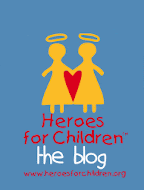"Your child has cancer" has to be four of the scariest words a parent could ever hear. More than a thousand parents in Texas will have those very words spoken to them. They will then learn the specific type of cancer and the treatment protocols to follow. They will learn a "new normal" for their lives. Every day, 46 children in the United States will be diagnosed with a form of cancer. Every day, a parent is hearing the devastating words "your child has cancer."
Childhood Cancer
The most common types of cancers in children are:
1. Leukemia--Acute Lymphoblastic Leukemia, otherwise known as ALL, is the most common form of childhood cancer. 75% of all cases of leukemias found in children are ALL. The treatment is long--ranging between 2 1/2 to 3 1/2 years depending on various factors. Treatment typically includes chemotherapy, quarterly spinal taps, steroid treatments. Some leukemia patients (AML and relapsed ALL most commonly) will also require a stem cell transplant (cord blood or bone marrow)
2. Brain Tumors--Brain tumors come in many forms. The most common are referred to as "gliomas." With brain tumors, patients often require surgery, chemotherapy, radiation, and sometimes other treatments such as proton therapy.
3. Sarcomas--These are bone or soft tissue cancers. There are many variations of cancers within this category. Osteosarcoma, a bone cancer, is more likely to be found at the growing end of the long bones in extremeties. This means that they are found in places such as the femur, and most commonly found during the teenage years. Soft tissue cancers include Rhabdomyosarcoma which develops in the muscles.
Treatment
Each cancer comes with a treatment. Often times, each child comes with a different treatment due to the specific needs of that child. Chemotherapy, surgery, radiation, long hospital stays, steroid treatments, and other targeted drug treatments are all things that can be happening for a patient.
Because pediatric oncology is still more rare than adult oncology, treatment centers are in major cities at bigger hospitals. For example, in the Dallas/Ft Worth Metroplex, families must travel to Medical City Children's Hospital, Children's Medical Center of Dallas, or Cook Children's of Ft. Worth for their treatments. This alone can be a hardship for those families traveling far distances.
The danger of infection is huge. A cancer patient and family must be vigilant about germs. There are no more fun trips to the Chuck E Cheese's in the beginning of treatment. During flu season, extra precautions are taken. When a child's ANC, or Absolute Neutrophil Count which is a number that shows their ability to fight infection is low, a family is often set to be in isolation either at home or in the hospital.
*Above information is from The American Cancer Society as well as Childhood Oncology Group (COG)
Making a difference
Heroes for Children is one of multiple organizations serving pediatric oncology. Many are searching for a cure for childhood cancer, putting their funds into critical research. We sincerely hope that research will one day make an organization like Heroes for Children not needed. However, until that time, we're here to support the families.
We hope you will join us this month in supporting families with children battling cancer in Texas. Visit our website for various activities this month you can be involved. in. You CAN make a difference in the lives of these families. Get involved TODAY.
**September is Childhood Cancer Awareness Month. How will you make a difference? www.heroesforchildren.org**







No comments:
Post a Comment